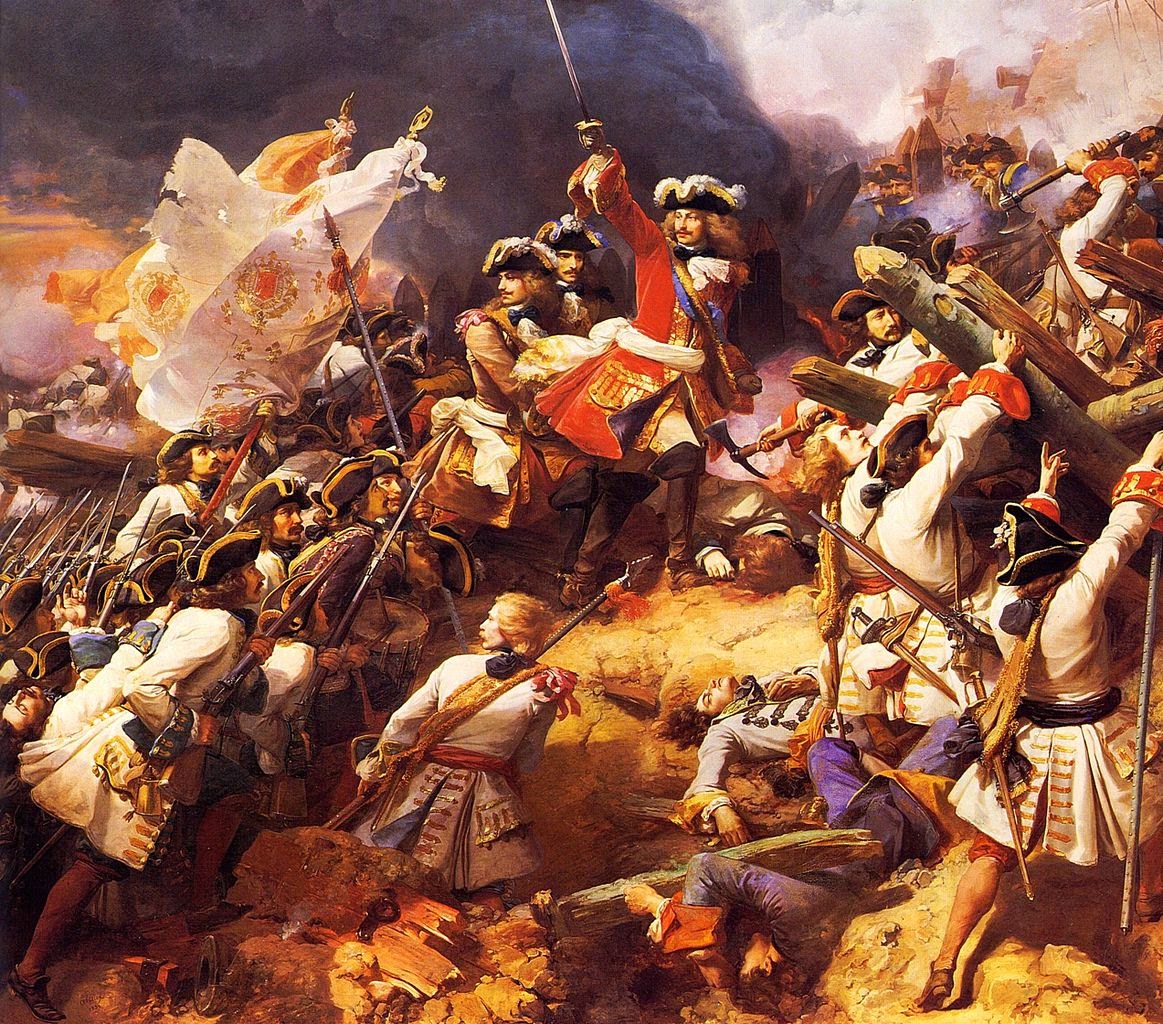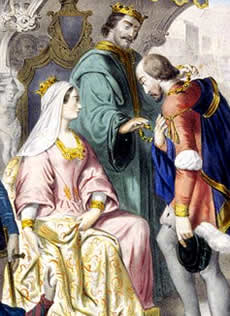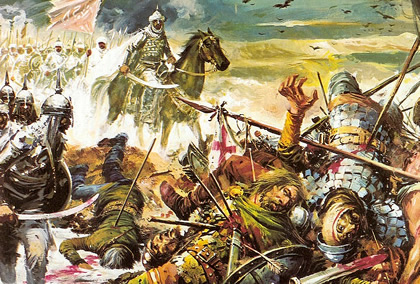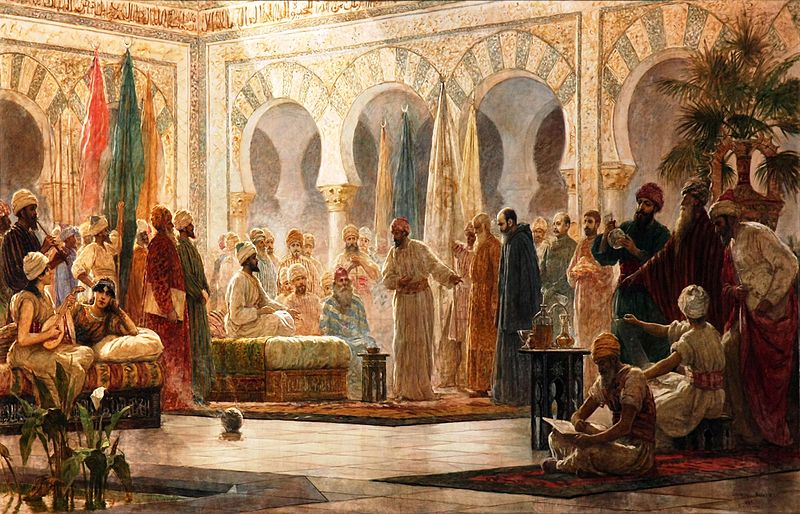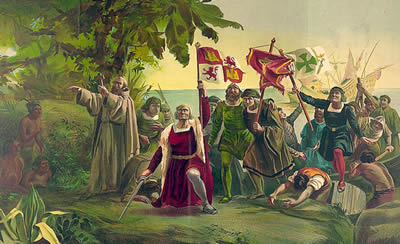The discovery of massive deposits of silver in New Spain and Peru from the mid-16th century set in motion a chain of events that reverberated across the globe. Large-scale silver production in Spanish America not only transformed local, regional, and colonial economies across large parts of the Americas.
It also fueled a price revolution in Europe, accelerated the growth of the nascent African slave trade, and heightened imperial competition between Europe’s early modern nation-states, particularly Spain and England.
American silver proved crucial in providing the Spanish imperial state with the fiscal base necessary to build and defend its overseas empire, while also sparking keen interest in American exploration and colonization by Spain’s European rivals. At every level—local, regional, colonywide, and global—the economic, social, and political transformations wrought by large-scale silver production in Spain’s New World holdings were enduring and profound.
Two main centers of silver production emerged in 16th-century Spanish America: the region north and west of Mexico City, centered on the provinces of Zacatecas and Guanajuato, and the “mountain of silver” at Potosí in the Peruvian Andes. (Silver production at Potosí is treated elsewhere in these website.)
in the Peruvian Andes. (Silver production at Potosí is treated elsewhere in these website.)
The development of New Spain’s silver industry, with its epicenter at Zacatecas, followed a very different trajectory. Unlike Peru’s, the silver deposits of New Spain had not been systematically mined by pre-Columbian polities.
had not been systematically mined by pre-Columbian polities.
The Zacatecas mining region, with its low rainfall and infertile soils, had been outside the Aztec sphere of influence and had few sedentary inhabitants prior to the conquest of Mexico. Silver ores were first discovered there in September 1546 by Juan de Tolsa, commander of a detachment of Spanish soldiers exploring the arid region.
In the next few years, the discovery prompted a vast silver rush, rapidly and permanently transforming the regional economies of Zacatecas, Guanajuato, and, farther south, the Bajío, the breadbasket of the colony, in response to rising demands for food, clothing, and other products required by the emergent mining economy.
New Spain Production
As in Peru, large-scale silver production in New Spain required huge infusions of both labor and capital, along with long-term investments and substantial technical expertise. Labor shortages soon proved the principal bottleneck to New Spain’s silver economy.
As in Peru, the Spanish Crown, eager to collect its quinto real (“royal fifth,” a tax comprising 20 percent of all production), played a central role in creating and fostering the colony’s silver mining industry, in some cases slashing its quinto in half to stimulate production.
The Crown claimed all subsoil rights, but in order to attract sufficient labor and capital, and to induce prospectors to find new deposits, the imperial state came to rely on a combination of state-directed and private initiatives.
Deep-shaft mines and their accompanying refining facilities were invariably owned by private individuals, primarily encomenderos in the mid- and late 1500s, followed by men of sufficient wealth and experience to own and operate such large and complex enterprises.
Indian and mestizo laborers were lured into the region from the Basin of Mexico and elsewhere mainly by relatively high wages and related incentives. By the 1550s, African slaves also began to play an increasingly important role in the mining industry, a development that provided an important stimulus to the Atlantic slave trade during its earliest phase.
Unlike the situation in Peru, where a modification of the preconquest mita labor in the Andean highlands generated a hellish environment for mineworkers, symbolized by the “infernal pits” of Potosí, in New Spain silver mine workers comprised a kind of aristocracy of labor, with relatively greater privileges and freedoms than Indians held in encomienda. Still, working conditions in the mines were dangerous and accidents common.
Hispanization proceeded more quickly among Indian, African, and mestizo mineworkers in Zacatecas than it did elsewhere in New Spain, creating a large, mostly proletarian Spanish-speaking male labor force. New Spain’s silver mines, along with its obrajes, were thus the first to develop private labor relationships, including wage labor, independent of state mediation or control, leading some scholars to interpret the mining economy as a key locus of the origins of capitalism in Mexico .
.
Ancillary industries, necessary to feed, clothe, and shelter mineworkers, mushroomed within the mining zones and beyond, including artisan work and craftwork, stock raising, agriculture, cloth production, and related enterprises. As in Peru, the ripple effects generated by the silver mining industry transformed local and regional economies far from the actual sites of production.
After the refinement of the mercury amalgamation process in the 1570s, silver production in Spanish America soared. While Potosí’s production declined from its height in the early 1600s, New Spain’s output remained relatively stable from the 1550s to around 1700, increasing dramatically thereafter.
In 1700, New Spain’s silver production hovered around 5 million pesos annually. By the 1780s, the figure had quadrupled. As early as 1600, silver ore, bullion, and coins constituted some 80 percent of New Spain’s exports, making it far and away the largest and most important industry in Spain’s wealthiest and most important colony.
Inflation in Spain
These massive infusions of silver into Spain’s economy contributed to an inflationary spiral that had profound ripple effects across large parts of Europe. The causes of the so-called price revolution that socked western Europe beginning in the 1560s were numerous and complex.
Along with steady population increases and the glacial pace of agricultural innovation , chief among the most common explanations for this dizzying rise in prices for food and manufactured goods in western Europe from the 1560s is the dramatic increase in the amount of silver coinage in circulation, a circumstance directly attributable to the enormous influx of silver into Spain from Peru and New Spain.
, chief among the most common explanations for this dizzying rise in prices for food and manufactured goods in western Europe from the 1560s is the dramatic increase in the amount of silver coinage in circulation, a circumstance directly attributable to the enormous influx of silver into Spain from Peru and New Spain.
Scholarly consensus holds that overall, this price revolution disproportionately benefited wealthier classes and harmed the poor, as the relentless rise in the price of bread, cloth, and rents was not matched by rising wages or productivity.
disproportionately benefited wealthier classes and harmed the poor, as the relentless rise in the price of bread, cloth, and rents was not matched by rising wages or productivity.
Spain’s example also spurred its rivals, especially England and France, to try to replicate Spain’s stunning successes in their own schemes of conquest and colonization in the Americas.
Yet the very different histories of these emergent nation-states generated very different models of colonization, with the English, French, Portuguese, and Dutch states playing a far lesser role than the Spanish Crown, and with a much greater role for private and entrepreneurial enterprises, most notably joint-stock companies, such as the Virginia Company , as the principal engines driving the initiatives that constituted the next wave of American conquests and colonization.
, as the principal engines driving the initiatives that constituted the next wave of American conquests and colonization.
It also fueled a price revolution in Europe, accelerated the growth of the nascent African slave trade, and heightened imperial competition between Europe’s early modern nation-states, particularly Spain and England.
American silver proved crucial in providing the Spanish imperial state with the fiscal base necessary to build and defend its overseas empire, while also sparking keen interest in American exploration and colonization by Spain’s European rivals. At every level—local, regional, colonywide, and global—the economic, social, and political transformations wrought by large-scale silver production in Spain’s New World holdings were enduring and profound.
Two main centers of silver production emerged in 16th-century Spanish America: the region north and west of Mexico City, centered on the provinces of Zacatecas and Guanajuato, and the “mountain of silver” at Potosí
  |
The development of New Spain’s silver industry, with its epicenter at Zacatecas, followed a very different trajectory. Unlike Peru’s, the silver deposits of New Spain
The Zacatecas mining region, with its low rainfall and infertile soils, had been outside the Aztec sphere of influence and had few sedentary inhabitants prior to the conquest of Mexico. Silver ores were first discovered there in September 1546 by Juan de Tolsa, commander of a detachment of Spanish soldiers exploring the arid region.
In the next few years, the discovery prompted a vast silver rush, rapidly and permanently transforming the regional economies of Zacatecas, Guanajuato, and, farther south, the Bajío, the breadbasket of the colony, in response to rising demands for food, clothing, and other products required by the emergent mining economy.
 |
| the “mountain of silver” at Potosí in the Peruvian Andes |
New Spain Production
As in Peru, large-scale silver production in New Spain required huge infusions of both labor and capital, along with long-term investments and substantial technical expertise. Labor shortages soon proved the principal bottleneck to New Spain’s silver economy.
As in Peru, the Spanish Crown, eager to collect its quinto real (“royal fifth,” a tax comprising 20 percent of all production), played a central role in creating and fostering the colony’s silver mining industry, in some cases slashing its quinto in half to stimulate production.
The Crown claimed all subsoil rights, but in order to attract sufficient labor and capital, and to induce prospectors to find new deposits, the imperial state came to rely on a combination of state-directed and private initiatives.
Deep-shaft mines and their accompanying refining facilities were invariably owned by private individuals, primarily encomenderos in the mid- and late 1500s, followed by men of sufficient wealth and experience to own and operate such large and complex enterprises.
Indian and mestizo laborers were lured into the region from the Basin of Mexico and elsewhere mainly by relatively high wages and related incentives. By the 1550s, African slaves also began to play an increasingly important role in the mining industry, a development that provided an important stimulus to the Atlantic slave trade during its earliest phase.
Unlike the situation in Peru, where a modification of the preconquest mita labor in the Andean highlands generated a hellish environment for mineworkers, symbolized by the “infernal pits” of Potosí, in New Spain silver mine workers comprised a kind of aristocracy of labor, with relatively greater privileges and freedoms than Indians held in encomienda. Still, working conditions in the mines were dangerous and accidents common.
Hispanization proceeded more quickly among Indian, African, and mestizo mineworkers in Zacatecas than it did elsewhere in New Spain, creating a large, mostly proletarian Spanish-speaking male labor force. New Spain’s silver mines, along with its obrajes, were thus the first to develop private labor relationships, including wage labor, independent of state mediation or control, leading some scholars to interpret the mining economy as a key locus of the origins of capitalism in Mexico
Ancillary industries, necessary to feed, clothe, and shelter mineworkers, mushroomed within the mining zones and beyond, including artisan work and craftwork, stock raising, agriculture, cloth production, and related enterprises. As in Peru, the ripple effects generated by the silver mining industry transformed local and regional economies far from the actual sites of production.
After the refinement of the mercury amalgamation process in the 1570s, silver production in Spanish America soared. While Potosí’s production declined from its height in the early 1600s, New Spain’s output remained relatively stable from the 1550s to around 1700, increasing dramatically thereafter.
In 1700, New Spain’s silver production hovered around 5 million pesos annually. By the 1780s, the figure had quadrupled. As early as 1600, silver ore, bullion, and coins constituted some 80 percent of New Spain’s exports, making it far and away the largest and most important industry in Spain’s wealthiest and most important colony.
Inflation in Spain
These massive infusions of silver into Spain’s economy contributed to an inflationary spiral that had profound ripple effects across large parts of Europe. The causes of the so-called price revolution that socked western Europe beginning in the 1560s were numerous and complex.
Along with steady population increases and the glacial pace of agricultural innovation
Scholarly consensus holds that overall, this price revolution
Spain’s example also spurred its rivals, especially England and France, to try to replicate Spain’s stunning successes in their own schemes of conquest and colonization in the Americas.
Yet the very different histories of these emergent nation-states generated very different models of colonization, with the English, French, Portuguese, and Dutch states playing a far lesser role than the Spanish Crown, and with a much greater role for private and entrepreneurial enterprises, most notably joint-stock companies, such as the Virginia Company







